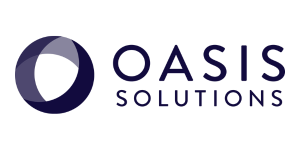The Enterprise Resource Planning Approach
By now you’ve probably heard all about ERP, the enterprise resource planning approach that cuts cost and boosts productivity by integrating all your processes into one cohesive system. You've probably heard that it can improve on-time deliveries and inventory control while simultaneously reducing administrative overhead. That it can streamline all of your processes by increasing visibility throughout the organization. And that it can turn inefficient companies with high cost structures into lean, mean operations that can compete with anyone in the world. So, now that you know ERP can save the world, let’s look at how to effectively select and implement a system.
1. Assemble a Cross-Functional ERP Team
Contrary to popular opinion, selecting, purchasing and implementing an ERP system should not be left solely to the IT function. In fact, if you do, you’ll almost certainly fail. Why? Because ERP software is an interrelated tool that touches every aspect of your business. In addition to streamlining all your mission-critical processes, the software has strategic capabilities that go far beyond merely helping to manage inventory more effectively or schedule jobs more accurately. ERP is really more of an approach to better managing your business than it is a software program. As such, the decision to implement ERP software is a strategic decision that requires the input and unequivocal support of the owner/CEO and the entire management team, not just the IT function.
As part of the team, your IT person plays an important role in the process, especially with regard to all network and hardware issues. To ensure success, however, all decisions regarding the purchase and deployment of an ERP system should be made by a cross-functional team that represents operations, purchasing, accounting, scheduling and all the essential activities of your business. Once assembled, the ERP team has responsibility for:
- Researching, evaluating and selecting the appropriate ERP software package
- Setting specific goals and objectives (such as improved on-time delivery, better inventory management) for the ERP initiative
- Working with the ERP vendor to create and execute an implementation plan
- Communicating the need for the ERP software and the benefits to the company and employees
- Following through on the plan and holding people accountable
When setting goals and objectives, be as specific as possible. For example, “improve on-time delivery by a minimum of 50 percent” will yield better results than the more generic “improve on-time delivery.” Specific goals lay a solid foundation for the implementation process and provide direction for the key decisions that must take place. More important, they provide tangible performance metrics with which to measure the success of the implementation and your return on investment. Be sure to recognize this group for a job well done after the ERP system is up and running well. This is a group of true leaders who have successfully implemented a significant change in your business.
2. Choose the Right Software for Your Business
With so many different ERP systems to choose from, identifying the right software package can be a daunting and time-consuming task. However, given the cost, integration and long-term impact of ERP systems, you can’t invest too much time in the evaluation process. Once you have a short list of finalists, conduct extensive interviews with each company and “demo” their software to see which one best fits your needs.
When evaluating different packages, look for the “three C’s” of an ERP system:
- Complete. The software should integrate all aspects of running a manufacturing business, everything from bidding on jobs to purchasing and materials management to invoicing accounts receivables and producing financial statements. Anything short of that and you’ll wind up with a cobbled together system with bolted on subsystems that may or may not work as intended.
- Comprehensive. Look for software that incorporates the latest technology and offers the most advanced features and menu options but is also intuitive and easy to use. One of the easiest ways to assess a system’s ease of use is to spend time moving through the system’s screens. Are the screens visually uncluttered? Does the system’s flow make sense intuitively?
- Customizable. The software should allow users to create custom reports and use a variety of custom options without requiring vendor modifications to the software. Make sure the system has easy customization features built in from the start.
In addition, ERP software should be:
- Flexible. The software should adapt to the way you do business. If it requires you to change your structure or mode of operations, look for another product.
- User friendly. Menu items should be self-explanatory, and the screen layout should make it easy for users to navigate. Learning and using the software shouldn’t require extensive reading of user manuals. However, the software should include a detailed online help system that makes it easy to find the desired information.
Fully integrated. When you make a change at one point in the system, the software should automatically make the change throughout the entire system. Do not invest in software that requires you to manually input the same change on multiple screens.
Finally, select a software that is strong at your weakest point. Although most ERP applications offer similar features and functions, some are stronger in certain areas than others. When conducting your research, look for an ERP system that delivers maximum performance in your areas of greatest need
Join us next week to learn the next two points in the Practice Guide to Selecting and Implementing a New ERP System.
From Annette Manias, President and Co-Founder of Oasis Solutions Group.


